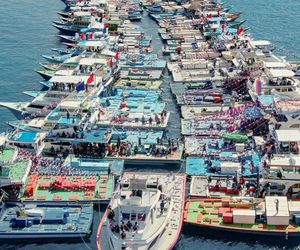Steep decline in Chinese tourist arrivals continues
As of August this year, Chinese arrivals have fallen by -11.5 percent, prompting Mega Maldives Airlines, which pioneered direct flights to China, to downsize and freeze hiring plans.

16 Oct 2016, 9:00 AM
A steep decline in the number of Chinese holidaymakers, the largest tourist market for the Maldives, continued in August with an -11.3 percent fall in arrivals.
Total arrivals, however, increased by 1.9 percent compared to August 2015, according to statistics released by the tourism ministry on Thursday, a month later than it was expected to be made public.
After growing exponentially from 2010 onward to capture a market share of 30 percent, Chinese arrivals peaked in 2014 with about 364,000 visitors and declined for the first time in 2015 by -1.1 percent.
As of August this year, Chinese arrivals have fallen by -11.5 percent. Some 260,491 Chinese tourists visited the Maldives from January to August, down from 230,437 last year. However, Chinese tourists still represent a market share of 27.3 percent.
Become a member
Get full access to our archive and personalise your experience.
Already a member?
Discussion
No comments yet. Be the first to share your thoughts!
No comments yet. Be the first to join the conversation!
Join the Conversation
Sign in to share your thoughts under an alias and take part in the discussion. Independent journalism thrives on open, respectful debate — your voice matters.




